How to grow a rose from a cutting: preparing a cutting and the best rooting methods
Growing a rose bush is a laborious process, but it brings great pleasure and, with a positive result, the joy of communicating with the queen of flowers - a rose. Of the several breeding methods, gardeners often choose the most effective one - grafting.
Content:
- One of the predominant ways of propagating a rose is by cuttings.
- Terms and rules for preparing the cutting
- Rooting the cuttings is an important stage in the development of a plant.
- Unconventional ways of rooting rose cuttings
- Creating conditions for the further growth of the rose
One of the predominant ways of propagating a rose is by cuttings.
Method cuttings when growing a variety of species roses give preference because in this way it is easier to get a finished flower close to the mother. In addition, roses grown by cuttings tolerate winter more calmly and quickly recover after it, and there is less unnecessary growth from them than from grafted specimens.
Although this breeding method has its drawbacks. At first, a plant obtained by cuttings has a weak root system, so they are vulnerable to many diseases. Young roses will have to experience more difficulties, living through the first winter.
Not all types of flowers are suitable for propagation by cuttings.
It is necessary to select those varieties of roses that can easily take root and grow for several years in a certain climatic zone. These include park flower species - Tchaikovsky, Sangria, Seville, as well as miniature roses - Kinderella, Green Ice. But in tea roses and their hybrids, the rooting of the cuttings is more difficult, and sometimes to no avail.
Also, another of the conditions for the stalk of the selected rose to take root, grow stronger and begin to bloom is its resistance to harsh climatic conditions. Therefore, one should not rely on the fact that a gorgeous bush, strewn with unusual flowers, will grow in the garden from a sprig of a Dutch rose or a delicate hybrid. No, only domestic varieties are able to gain a foothold in their own garden.
Terms and rules for preparing the cutting
The main place for the propagation of roses cuttings time is allocated for preparing the material for planting. By the appearance of the shoot, it is determined whether it is ripe for this reproduction procedure or not. The branches should be woody or green with partial woodiness. You can determine the readiness for reproduction of a rose by the thorns: in mature shoots, they break easily, without effort. Cuttings are harvested either in early spring or in autumn.
It is necessary to start cutting branches in the period from the appearance of the buds to the end flowering... If you cut it earlier, then the sprout will give all the strength to the bud and the development of shoots from it and will not take root.
The harvesting of cuttings in the fall has one feature - the preservation in them of the ability for further development and rooting during the winter.
Therefore, cuttings are taken with a completely woody branch with a thickness of up to 5 millimeters with a thin and immature tip, which must be removed. Some gardeners try to harvest planting material in the summer, then planting it in boxes for the formation of callus. After that, the cuttings are pulled out, tied together and placed in wet sand. It is better to store containers with cuttings in a cool place, tightly covering the top with cellophane bags. They remain in this state until spring, keeping their vitality at a temperature of 1-2 degrees below zero for subsequent development.
The rules for harvesting cuttings provide for the following:
- The material is cut in the early morning when the water content in the stems is increased.
- The length of the cut branch should not exceed 15 centimeters, and there should be three buds on it. The top cut is usually two centimeters higher than the nodule, and the bottom cut is just below it.
- For the procedure of harvesting cuttings, preference is given to a sharp knife or scalpel. Otherwise, the tissues of the stem will be bent, and the process of decay will begin in them.
- Cutting branches - only at a 45 degree angle.
- Then the branch is cleaned of thorns and leaves growing below it, and a few leaves are left at the top in order to improve the processes of photosynthesis in plants.
- Before planting the cuttings in the prepared soil substrate, the cut located below is treated with a growth-stimulating drug, such as Kornevin, or dipped in a solution of potassium permanganate.
Rooting the cuttings is an important stage in the development of a plant.
The cuttings are prepared, and now the next stage in the propagation of a rose is rooting. To do this, branches are placed in the soil, which must have the ability to retain moisture and allow air to pass through. An excellent addition to it would be sand or sphagnum, which protects the cuttings from decay. For the accelerated development of the sprout, a greenhouse effect is created for it, covering it with a special material. Usually, after a month, roots appear on the branch of the rose, and then you can transplant to a permanent place.
Also, the most accessible substance in which plants take root well is water. But do not rely on the simplicity of this method, here, too, it is necessary to follow a number of rules for rooting rose cuttings in water:
- You cannot often change the liquid in the jar, since the nutrients needed by the plant accumulate there. If it becomes small in the container, then it is better to add the required amount.
- It is not recommended to put a lot of prepared branches in the jar: they will take root much slower.
- In order for rooting to be successful, it is necessary to monitor the condition of the cutting, preventing its rotting.
Unconventional ways of rooting rose cuttings
The emergence of new methods of rooting roses helps the gardener to choose the ideal option for himself in terms of complexity and efficiency:
- The simplest method is planting a prepared cutting in open ground, followed by warming the plantings with a small layer of earth or sawdust.
- But to grow a rose using potatoes - this is quite unusual and uncomplicated. To do this, on a spring day, they dig a shallow groove up to 15 centimeters and fill it by a third with sand. Tubers of young potatoes without eyes are laid out at the bottom, cut branches of a rose are stuck into them and all this is buried for most of the length of the cutting. To create moisture inside, the branches are closed with cans. Watering for future flowers is required daily, once a week - with water with added sugar. After a while, the cans can be removed from the sprouts.
- Very often, having received a beautiful rose as a gift, you want to grow the same on your site. But you only need to take branches from fresh bouquet and domestic varieties. For better growth and development of roots, purified water is suitable for such cuttings.
- The roots of cuttings can also appear if you put the branches in a bag filled with soil or moss soaked in juice aloe... Then the unusual container is inflated, tied tightly and hung on the window. And after a month you can see how the branches will start up the first roots.
- Controversial in the assessment of gardeners is considered the Burrito method, which is widely used in America and Australia. Rose cuttings are simply wrapped in newspaper, placing a layer of sphagnum moss between them. The newspaper is moistened with moderate water, placed in a bag and placed in a dark place with an air temperature of about 18 degrees above zero for a month. As soon as callus forms at least 4 millimeters in size from below on the branches, they can be planted in the ground.
- But the Trannoy breeding method is quite simple: as soon as they bloom roses, it is necessary to select branches with swollen buds and cut them off. Cuttings prepared as usual, several pieces at a time, are placed in the holes at a slight angle. Having sprinkled the young branches with earth, close the plantings with plastic bottles, having previously cut off the neck from them.
Each method of rooting cuttings has its own pros and cons. To choose the most optimal one, you need to try the most well-known methods used in the propagation of roses, and see the positive result of the actions taken.
Creating conditions for the further growth of the rose
Rooted shoots in a permanent place in the garden roses planted more often in the fall. And here we must not forget about protecting the young plant from frost. Plant bushes are covered with the arrival of the first frost either with a special material for warming plantings, or with branches of coniferous trees.
Roses are heat-loving plants, so they are planted in sunny, open places. The soil is chosen for the queen of flowers, neutral or slightly acidic.
Fertilizing roses:
- Three times a year, roses are fed with special mineral fertilizers a tablespoon per 10 liters of water: first with nitrogen, then with nitrophosphate, and finally with potassium salt and superphosphates.
- Chicken droppings for feeding must be used carefully, as it can burn root system plants. Bring it in organic fertilizer you can after fermenting it in water for 10 days.
- And the use of manure for application to the ground where roses are planted is strictly prohibited.
The main thing in caring for rose cuttings is watering, which must be carried out according to the rules, without flooding the sprout with water. Moistened and loosened soil is essential for flower growth. In addition to watering, the flower plant responds well to spraying leaves. Creating comfortable conditions necessary for a new flower will help to breed different varieties of roses on the site.
More information can be found in the video.



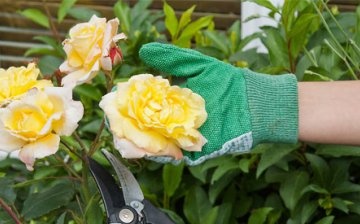

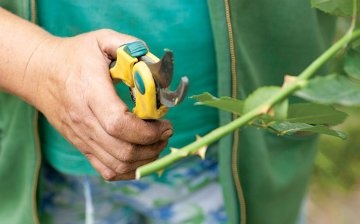
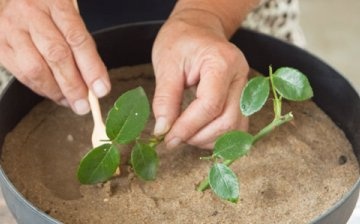
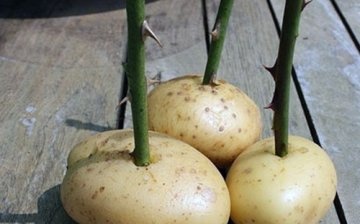







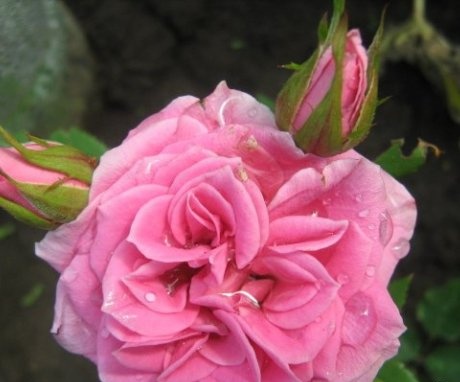


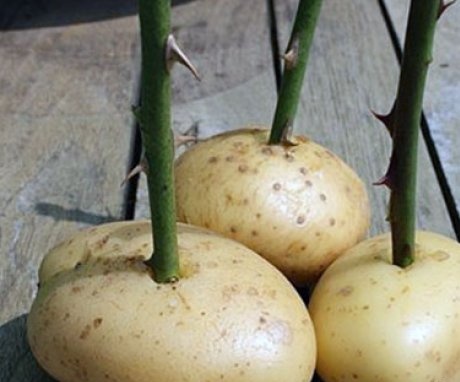

I usually keep the cutting in sweetened water until the roots begin to appear, then I plant it in a pot for indoor plants and cover it with a glass jar. I do this in the fall, in the spring the stalk can be transplanted into the ground along with the ground.
Roses are often difficult to take root. I tried to root the stalk of a purchased rose in indoor conditions, nothing happened. In our stores, in the garden departments, cuttings of roses are already sold with roots, which can be immediately planted in the country.
I have tried growing a rose from a cuttings. If everything is done correctly, then, most of the cuttings take root, but not all survive the first winter and many freeze out. Therefore, you need to cut the cuttings of several varieties of roses, since their frost resistance is different.